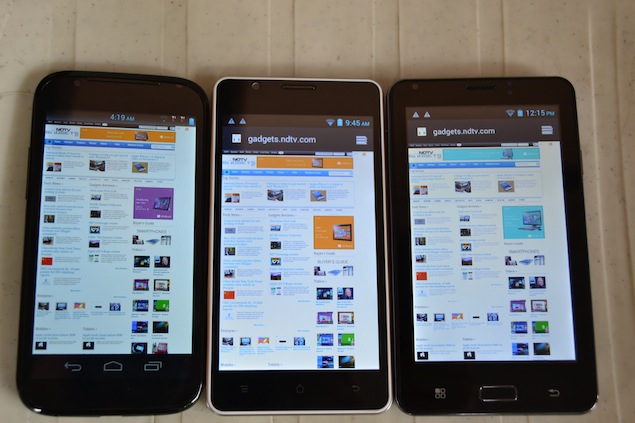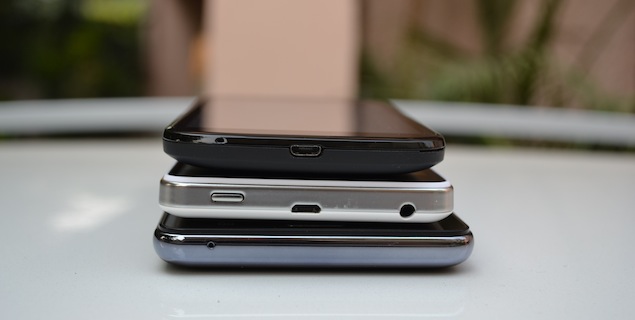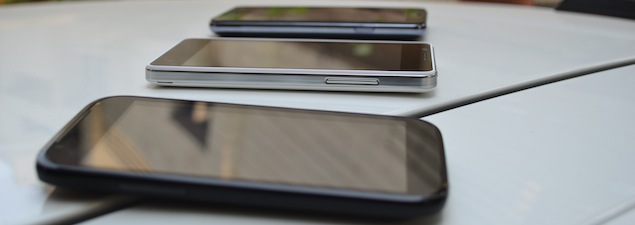Huawei planning to launch a range of Windows Phone devices later this year

Huawei Technologies Co Ltd, the world's sixth biggest maker of mobile phones, is looking to its smartphones to outpace global growth rates and drive a consumer gadgets business that will rival its flagship telecoms gear in revenue.The Shenzhen based company founded 25 years ago by former People's Liberation Army soldier Ren Zhengfei is currently number-two globally in communication networks, a business that last year brought in close to three-quarters of total revenue.
That will change as Huawei plans to carve out a global brand in smartphones, taking the fight to Samsung Electronics Co Ltd and Apple Inc, particularly in China, expected this year to become the world's biggest smartphone market.
In the fiercely contested smartphone arena, Huawei expects to ramp up its Android focused product range with Microsoft Windows 8 phones and tablet PCs, and possibly also so called phablets phone/tablets. It is also considering developing its own smartphone operating system to distance itself from Android, which has been the focus of legal disputes between Apple and other major handset makers.
"Whatever consumers like, we'll develop," Wan Biao, CEO of Huawei Device, said in an interview on Monday at the company's headquarters. "We're also devoting resources into coming up with a phone operating system based on our current platform in case other companies won't let us use their system one day."
Huawei has grown its consumer devices business which sells mobiles, tablet PCs and dongles aggressively. Its mobiles have picked up market share, though at the expense of profitability prompting the company to shift towards higher end products such as its Vision and Ascend models.
"We're still investing actively for the next 1-2 years, so it will be a big challenge to achieve high profitability," Wan said. In July, Huawei posted a 22 percent drop in first half operating profit, citing the "significant challenge" of a weak global economy and tighter spending by telecoms operators.
Huawei expects consumer device revenue to grow steadily at around 30 percent next year, though sales from smartphones will grow faster, at around 40 percent. The company has said it expects the business to grow revenue by around a third this year to $9 billion, and could reach $30 billion in five years, matching the telecoms equipment business as a revenue driver.
Branding challenge
Analysts maintain that smartphone branding is a major challenge for Huawei, which for years produced so called white boxes for telecom carriers to sell as theirs. "The phones really look cool, feature wise. From the end-users' perspective, it's still a branding thing," said Ajay Sunder, an analyst at Frost and Sullivan.
"Traditionally, Huawei and (local rival) ZTE Corp have been selling to the lower-end of the market. It was a price game for them. So moving up the value chain to command a premium for the phones and the brand that definitely seems to be a challenge."
"The best way for them will be to have a separate branding for their mobile phones than to use the Huawei brand," Sunder added.
Huawei also plans to launch smartphones using the Windows 8 operating system later this year or early next year, though it gave no specific timeframe for its Win 8 tablets and phablets.
Sunder reckons it will be tough for companies to compete in an operating system market dominated by Apple, Google and Microsoft, as software developers will be less keen to write applications for a small user base. "It's a chicken and egg situation," he said.
Huawei has said previously it aims to ship more than 100 million mobile phones this year, including 60 million smartphones. It's sticking to that forecast even though sales this year are below target prompting broker Jefferies in July to predict smartphone sales of 35-40 million.
"It will be very challenging, but that target remains intact," said Wan, who joined Huawei 16 years ago.
But Huawei's growth will still outpace the industry. UK research firm Ovum on Monday forecast global smartphone shipments of 1.7 billion in 2017, up from 450 million last year, implying an average annual growth of more than 20 percent.
In a recent media interview, Huawei's deputy chairman Hu Houkun said the company aimed to be the global No.3 smartphone vendor, with 15 percent market share by 2015, up from around 5 percent currently.
While Huawei has made strides with its consumer products, its telecoms equipment business has hit roadblocks in the United States and, more recently, in Australia, over security issues political obstacles the company has decried as unsubstantiated "allegations based on allegations.
Europe, however, looks to be a brighter spot, and Huawei this month outlined plans to invest $2 billion to expand its operations in Britain, creating about 700 new jobs over five years.
Copyright Thomson Reuters 2012
That will change as Huawei plans to carve out a global brand in smartphones, taking the fight to Samsung Electronics Co Ltd and Apple Inc, particularly in China, expected this year to become the world's biggest smartphone market.
In the fiercely contested smartphone arena, Huawei expects to ramp up its Android focused product range with Microsoft Windows 8 phones and tablet PCs, and possibly also so called phablets phone/tablets. It is also considering developing its own smartphone operating system to distance itself from Android, which has been the focus of legal disputes between Apple and other major handset makers.
"Whatever consumers like, we'll develop," Wan Biao, CEO of Huawei Device, said in an interview on Monday at the company's headquarters. "We're also devoting resources into coming up with a phone operating system based on our current platform in case other companies won't let us use their system one day."
Huawei has grown its consumer devices business which sells mobiles, tablet PCs and dongles aggressively. Its mobiles have picked up market share, though at the expense of profitability prompting the company to shift towards higher end products such as its Vision and Ascend models.
"We're still investing actively for the next 1-2 years, so it will be a big challenge to achieve high profitability," Wan said. In July, Huawei posted a 22 percent drop in first half operating profit, citing the "significant challenge" of a weak global economy and tighter spending by telecoms operators.
Huawei expects consumer device revenue to grow steadily at around 30 percent next year, though sales from smartphones will grow faster, at around 40 percent. The company has said it expects the business to grow revenue by around a third this year to $9 billion, and could reach $30 billion in five years, matching the telecoms equipment business as a revenue driver.
Branding challenge
Analysts maintain that smartphone branding is a major challenge for Huawei, which for years produced so called white boxes for telecom carriers to sell as theirs. "The phones really look cool, feature wise. From the end-users' perspective, it's still a branding thing," said Ajay Sunder, an analyst at Frost and Sullivan.
"Traditionally, Huawei and (local rival) ZTE Corp have been selling to the lower-end of the market. It was a price game for them. So moving up the value chain to command a premium for the phones and the brand that definitely seems to be a challenge."
"The best way for them will be to have a separate branding for their mobile phones than to use the Huawei brand," Sunder added.
Huawei also plans to launch smartphones using the Windows 8 operating system later this year or early next year, though it gave no specific timeframe for its Win 8 tablets and phablets.
Sunder reckons it will be tough for companies to compete in an operating system market dominated by Apple, Google and Microsoft, as software developers will be less keen to write applications for a small user base. "It's a chicken and egg situation," he said.
Huawei has said previously it aims to ship more than 100 million mobile phones this year, including 60 million smartphones. It's sticking to that forecast even though sales this year are below target prompting broker Jefferies in July to predict smartphone sales of 35-40 million.
"It will be very challenging, but that target remains intact," said Wan, who joined Huawei 16 years ago.
But Huawei's growth will still outpace the industry. UK research firm Ovum on Monday forecast global smartphone shipments of 1.7 billion in 2017, up from 450 million last year, implying an average annual growth of more than 20 percent.
In a recent media interview, Huawei's deputy chairman Hu Houkun said the company aimed to be the global No.3 smartphone vendor, with 15 percent market share by 2015, up from around 5 percent currently.
While Huawei has made strides with its consumer products, its telecoms equipment business has hit roadblocks in the United States and, more recently, in Australia, over security issues political obstacles the company has decried as unsubstantiated "allegations based on allegations.
Europe, however, looks to be a brighter spot, and Huawei this month outlined plans to invest $2 billion to expand its operations in Britain, creating about 700 new jobs over five years.
Copyright Thomson Reuters 2012














